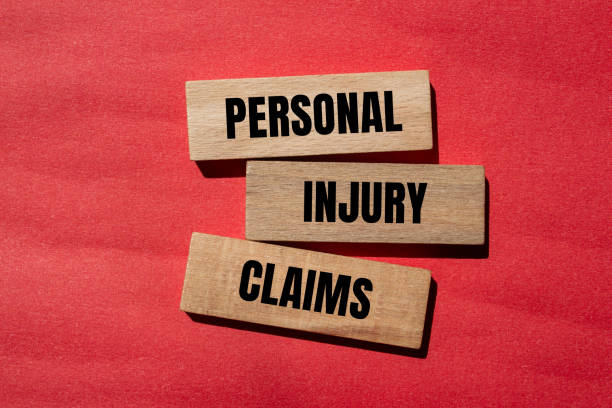Contents
Introduction to Personal Injury Claims
Personal injury claims arise when an individual suffers harm due to another’s negligence or intentional actions. These claims seek to provide compensation for physical, emotional, and financial damages caused by the injury. Understanding how to prove negligence is crucial in personal injury cases, as it forms the foundation for establishing liability and securing compensation.
Historical Development of Negligence Law in the U.S.
The concept of negligence has evolved significantly over time. In the U.S., negligence law emerged from English common law principles. The landmark case of Brown v. Kendall (1850) in Massachusetts marked the beginning of modern negligence law by establishing the standard of “reasonable care.”
Subsequent cases, such as Palsgraf v. Long Island Railroad Co. (1928), further refined the principles of duty, foreseeability, and proximate cause, shaping the current framework of negligence law.
Elements of Negligence
To prove negligence in a personal injury claim, the plaintiff must establish four key elements:
Duty of Care
The plaintiff must show that the defendant owed them a duty of care. This means the defendant had a legal obligation to act in a manner that would prevent harm to others. For example, drivers have a duty to follow traffic laws and avoid causing accidents.
Breach of Duty
The plaintiff must demonstrate that the defendant breached their duty of care by acting or failing to act in a certain way. This breach can be an action that a reasonably prudent person would not have taken or the omission of a necessary action that a reasonably prudent person would have taken under similar circumstances.
Causation
The plaintiff must prove that the defendant’s breach of duty directly caused their injury. This involves establishing both actual cause (the injury would not have occurred “but for” the defendant’s actions) and proximate cause (the injury was a foreseeable result of the defendant’s actions).
Damages
The plaintiff must show that they suffered actual damages as a result of the defendant’s breach. These damages can include physical injuries, emotional distress, medical expenses, lost wages, and other related costs.
Proving Negligence
Gathering and Presenting Evidence
Evidence is crucial in proving negligence. This can include:
- Medical Records: Documenting the extent of injuries and treatment.
- Witness Statements: Providing firsthand accounts of the incident.
- Photographs and Videos: Capturing the scene of the accident and any visible injuries.
- Accident Reports: Official reports from law enforcement or other authorities.
Role of Expert Witnesses
Expert witnesses can provide specialized knowledge to support the plaintiff’s claims. For instance, medical experts can testify about the nature and extent of injuries, while accident reconstruction experts can explain how the incident occurred and establish fault.
Challenges and Defenses in Negligence Claims
Common Defenses Against Negligence Claims
Defendants in negligence cases may raise several defenses, including:
- Contributory Negligence: Arguing that the plaintiff’s own negligence contributed to their injuries, which can reduce or bar recovery.
- Comparative Negligence: In states following comparative negligence rules, the plaintiff’s compensation may be reduced based on their percentage of fault.
- Assumption of Risk: Claiming that the plaintiff knowingly and voluntarily assumed the risks associated with the activity that caused their injury.
Potential Challenges in Proving Negligence
Proving negligence can be challenging due to factors such as lack of evidence, conflicting witness statements, and complex causation issues. Plaintiffs must thoroughly prepare their cases to overcome these obstacles.
Importance of Legal Representation
Role of Personal Injury Lawyers
Hiring a qualified personal injury lawyer is crucial for navigating the complexities of negligence claims. A Seattle lawyer focusing on personal injury litigation can provide invaluable assistance in gathering evidence, negotiating with insurance companies, and representing the plaintiff in court.
Benefits of Legal Assistance
- Expertise: Lawyers have a deep understanding of personal injury law and can craft compelling legal arguments.
- Resources: Law firms often have access to a network of experts and investigators.
- Negotiation Skills: Lawyers can effectively negotiate settlements to ensure fair compensation for their clients.
- Peace of Mind: Having legal representation allows plaintiffs to focus on recovery while their lawyer handles the legal aspects of their case.
Potential Compensation and Damages
Types of Damages Available
Plaintiffs in personal injury cases may be entitled to various types of damages, including:
- Economic Damages: Covering medical expenses, lost wages, and other financial losses.
- Non-Economic Damages: Compensating for pain and suffering, emotional distress, and loss of enjoyment of life.
- Punitive Damages: Awarded in cases of gross negligence or intentional misconduct to punish the defendant and deter similar behavior.
Factors Affecting Compensation
Several factors can influence the amount of compensation awarded, such as:
- Severity of Injuries: More severe injuries typically result in higher compensation.
- Impact on Quality of Life: Consideration of how the injury affects the plaintiff’s daily life and future.
- Defendant’s Conduct: The nature and extent of the defendant’s negligence or misconduct.
Practical Tips for Filing a Personal Injury Claim
Steps to Take After an Injury
- Seek Medical Attention: Ensure that injuries are properly documented and treated.
- Report the Incident: File an accident report with the appropriate authorities.
- Gather Evidence: Collect photographs, witness contact information, and other relevant evidence.
- Consult a Lawyer: Seek legal advice to understand your rights and options.
Tips for Strengthening Your Claim
- Keep Detailed Records: Maintain thorough documentation of all medical treatments, expenses, and communications related to the injury.
- Follow Medical Advice: Adhere to your doctor’s recommendations to avoid any argument that you failed to mitigate your damages.
- Avoid Discussing the Case Publicly: Refrain from discussing the case on social media or with others, as statements can be used against you.
Conclusion
Proving negligence in personal injury claims is a multifaceted process that requires a clear understanding of legal principles, thorough evidence gathering, and expert legal representation.
By comprehensively establishing the elements of negligence and effectively countering defenses, plaintiffs can increase their chances of securing fair compensation for their injuries. If you are considering filing a personal injury claim, consult with a Seattle lawyer focusing on personal injury litigation to ensure your case is handled with expertise and diligence.




